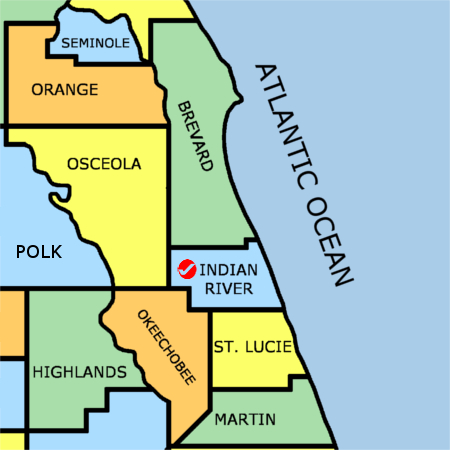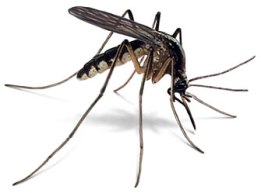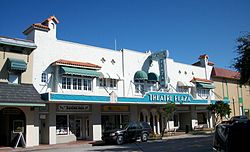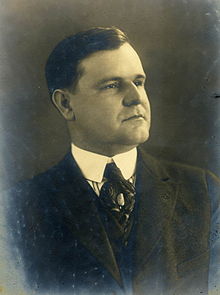HOW DID INDIAN RIVER COUNTY BECOME INDIAN RIVER COUNTY?
It all had to do with mosquitos, “blue” laws and Governor John Martin.
Prior to 1925 what are now Indian River and Martin counties were part of St. Lucie County. Indian River and Martin counties did not exist.
The then St. Lucie county extended from the Sebastian River in the north to Stuart in the south. Ft. Pierce was the county seat.
According to Gordon Patterson, in his book The Mosquito Wars, “James Vocelle, a lawyer who came to Vero Beach in 1924 recalled the tension between the two ends of the (St. Lucie) county. For one, mosquitos, Vocelle explained, “were of great concern.”
Because of the mosquito population, local real estate developers in the north, during the land boom, maintained that the mosquitos were a drawback for people moving there. Once again, according to Vocelle, support for mosquito control in the northern section of the county “was so strong that members of local organizations behind the movement intend to exert every effort to carry it to a successful conclusion.” Paterson writes that “They were convinced that a mosquito abatement district would stimulate economic growth.”
Meanwhile, St. Lucie county’s “blue” laws caused a crisis and was one of the main catalysts for the break-up of St. Lucie county. “Progressive” Veroites created an uproar in 1924 wanting to remove the town from the grasp of St. Lucie county politicians as the result of William Atkin’s new movie theatre in downtown Vero. Mr. Atkin opened the “picture show” on a Sunday.
At that time St. Lucie County blue laws forbid the sale of any merchandise on a Sunday, as well as showing movies.
Despite the law, Mr. Atkin opened the picture show on a Sunday (although Mr. Vocele had advised him that “the blue laws in St. Lucie County prohibited selling so much as a gallon of gas, let alone showing a picture show.”)
Mr. Atkin continued to show his movies on Sundays until a few weeks later when someone in Fort Pierce, the county seat, complained to the sheriff. In early 1925 Fort Pierce’s sheriff and town marshals stormed the theatre, stopped the show, arrested the theatre manager, the ticket seller and the projectionist. According to witnesses, Patterson writes, “the Sheriff drew his gun…and roughly ordered the crowd that had gathered to make way for him.”
This was the last straw and from this point on Vocelle, Atkin and other community leaders worked vociferously to create a new county.
The efforts to create a new county were also fed by the desire to form a mosquito control district in the northern section of St. Lucie County.
Mr. Patterson writes that: In Vero, Vocelle and Alex MacWilliam, a Scottish emigre and prominent businessman proposed that a bill calling for the creation of the state’s first mosquito control district should be introduced at the same time as the legislation authorizing the creation of a new county. In May, 1925 Vocelle and McWilliam led a trainload of one hundred supporters of the new county and the mosquito abatement district to Tallahassee.
At the same time, residents of Stuart, at the southern end of St. Lucie County “felt like stepchildren, as their sole representation was a single commissioner who was easily outvoted.” They felt they were taxed heavily for services that gave them few benefits.
While previous attempts to create a new county in the Stuart region were unsuccessful, in 1924, “the Stuart Commercial Club, forerunner of the Stuart Chamber of Commerce, attacked the issue the issue of county division with renewed determination.” Stuart Mayor Stanley Kitching and Stuart’s first Mayor, J. B. McDonald, led the extensive delegation that travelled to lobby for the new county. (Sources: http://www.martin.fl.us)
Despite protests from a Fort Pierce delegation, in May, 1925 a compromise was reached and the legislature authorized St. Lucie County to be devided into three counties: Indian River and Martin and St. Lucie. In early June, Governor John Martin signed both the bills to divide St. Lucie into the three counties and establish Florida’s first mosquito district in Indian River County. Vero became Indian River County’s county seat and Vero’s name was changed to Vero Beach.
Governor Martin came to Vero Beach to celebrate the creation of the three counties at Mr. Atkin’s new movie theatre.
Florida Governor John Martin
Now its here say, but perhaps by reading through the lines, its been said that when the Vero delegation went to Tallahassee to lobby for its own county, Governor Martin wanted it to be named after him. The Vero delegation said no; they wanted it to be named Indian River County. Thus there was a stalemate.
Knowing that the Stuart contingent was also endeavoring to separate from St. Lucie County, Vero leadership approached them and asked if they would name their county after Governor Martin; to bring him on board with the division of St. Lucie County. They said yes.
Then Vero leadership went back to Governor Martin and indicated the Stuart delegation would be agreeable to naming their county after him, so long as the new northern county would be named Indian River County. Such it is.
Now where did Vero get it’s name?
Vero was settled by early pioneers in the 1880’s, was chartered as a town in 1919 and became Vero Beach in 1925. Henry T. Gifford was one of Vero’s most notable early settlers. In 1887, he built a house which is now located near present-day City Hall. He operated a citrus grove business and established Vero’s first mercantile store, which also operated as a post office, express office and railroad ticket office. The name Vero is often attributed to his wife Sarah who suggested the settlement be named for its Latin meaning, “to speak the truth”.




This is a fun article – I would like to repost some of the content with your permission. Thank you!
LikeLike
Yes, that’s fine. Let us know where you report it! Thank you for your interest.
LikeLiked by 1 person
Here you go 🙂 Added a little bit to it. It was such a fun story – thanks again!
https://veroluxuryhomes.wordpress.com/2018/01/08/mosquitoes-movies-and-the-progressives-that-changed-vero/
LikeLike
Pingback: Mosquitoes, Movies and the Progressives that changed Vero – The Bailey Daily
Good information Tom
You always do such a good job.
LikeLike
Thank you, Deb.
LikeLike
My grandpa moved here from Cape Canaveral in 1906. Vero (pronounced Veero with a long E) has always been my home.
LikeLike